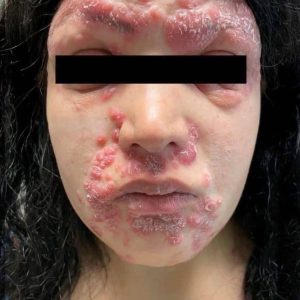Urticaria, commonly known as hives, is a skin condition characterized by red, raised, itchy welts that may appear anywhere on the body. These welts often resolve within 24 hours but can recur, sometimes affecting quality of life despite being generally harmless.
The condition occurs when mast cells release histamine and other chemicals, causing fluid to leak from small blood vessels into the skin. This leads to swelling, redness, and itching. A hallmark feature is the fleeting nature of the welts—disappearing without leaving marks, though new ones may emerge elsewhere.
Symptoms include raised, itchy hives and sometimes angioedema, which involves deeper swelling, particularly in areas like the lips, eyelids, hands, or feet. If swelling affects the throat or tongue, it can become a medical emergency due to breathing difficulties.
Urticaria is classified by duration and triggers:
-
Acute urticaria lasts less than six weeks and is often linked to allergens, infections, insect bites, medications, or stress.
-
Chronic urticaria lasts longer than six weeks and may occur without an identifiable cause, though autoimmune factors are sometimes involved.
-
Physical or inducible urticaria is triggered by physical stimuli such as pressure, cold, heat, or sunlight.
Treatment focuses on managing symptoms and avoiding triggers. Antihistamines are the first-line treatment, helping relieve itching and swelling. For more severe cases, short-term corticosteroids may be used. Identifying and avoiding triggers plays a critical role in preventing flare-ups.





